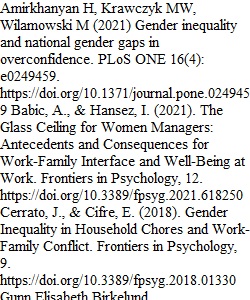


Q Introduction All students will design an intervention (change effort) from start to finish for their present organization. For students not presently employed, they should design an intervention for an organization of which they are or have been a member. This paper must identify the problem or issue to be changed, and specify a goal that would signify success. This paper must also include how metrics, assessment, and feedback would be handled; i.e., the complete change or intervention process. The paper will be developed in stages, with each stage having its own due date (see below). For complete assignment details go to the Assignments and Grading page in the Course Information section. ________________________________________ Resource: Annotated Bibliographies A bibliography is a list of sources (books, journals, Web sites, periodicals, etc.) one has used for researching a topic. Bibliographies are sometimes called "References" or "Works Cited" depending on the style format you are using. A bibliography usually just includes the bibliographic information (i.e., the author, title, publisher, etc.). Writing an annotated bibliography is excellent preparation for a research project. Just collecting sources for a bibliography is useful, but when you have to write annotations for each source, you're forced to read each source more carefully. You begin to read more critically instead of just collecting information. At the professional level, annotated bibliographies allow you to see what has been done in the literature and where your own research or scholarship can fit. To help you formulate a thesis: Every good research paper is an argument. The purpose of research is to state and support a thesis. So, a very important part of research is developing a thesis that is debatable, interesting, and current. Writing an annotated bibliography can help you gain a good perspective on what is being said about your topic. By reading and responding to a variety of sources on a topic, you'll start to see what the issues are, what people are arguing about, and you'll then be able to develop your own point of view. An annotated bibliography includes a summary and/or evaluation of each of the sources. Summarize: Some annotations merely summarize the source. What are the main arguments? What is the point of this book or article? What topics are covered? The length of your annotations will determine how detailed your summary is. Assess: After summarizing a source, it may be helpful to evaluate it. Is it a useful source? How does it compare with other sources in your bibliography? Is the information reliable? Is this source biased or objective? What is the goal of this source? Reflect: Once you've summarized and assessed a source, you need to ask how it fits into your research. Was this source helpful to you? How does it help you shape your argument? How can you use this source in your research project? Has it changed how you think about your topic? ________________________________________ Due Date and Submission Requirements Annotated Bibliography (16 points) due by 11:59 p.m. Sunday CT. Upcoming Due Dates • Rough draft (16 points) due by 11:59 p.m. Sunday of Unit 6. • Final Paper (156 points) due by 11:59 p.m. Sunday of Unit 7. Rubric Some Rubric (1) Some Rubric (1) Criteria Ratings Pts This criterion is linked to a Learning OutcomeDescription of criterion 16 pts Full Marks 0 pts No Marks 16 pts Total Points: 16 PreviousNext
View Related Questions